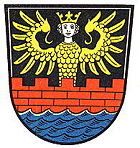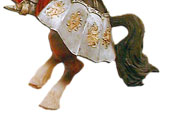| Dockings and Events |
|
| Museum Ship in Emden starts on 23.05. till 07.06.2009 |
 |
Location: Ratsdelft

The exact founding date of Emden is unknown, but it has existed at least since the 8th century. Older names for Emden are Amuthon, Embda, Emda, Embden. City rights and the city's coat of arms, the "Engelke up de Muer" was granted by Emperor Maximilian I in 1495.
Emden was a very rich city during the 17th century, due to large numbers of Dutch immigrants. It was a center of reformed Protestantism at that time, producing the first Bible translation in Dutch. During the Napoleonic French era, Emden and the surrounding lands of East Frisia were part of the short-lived Kingdom of Holland.
Industrialization started at around 1870, with a paper mill and a somewhat bigger shipyard. At the end of the 19th century, a big canal, the Dortmund-Ems Canal was constructed, which connected Emden with the Ruhr area. This made Emden the "seaport of the Ruhr area" - which lasted until the 1970s. Coal from the south was transported to the North Sea port, and imported iron ore was shipped via the canal towards Rhine and Ruhr. The last iron ore freighter was moored in Emdens port in 1986.
In 1903, a big shipyard (Nordseewerke, "North Sea Works") was founded which still ex ists. ists.
The main city was almost completely wiped out during allied bombing raids during the Second World War, destroying nearly all historic buildings. The most severe bombing took place on September 6, 1944, when roughly 80 percent of all houses in the inner city were destroyed. In the collective memory of the city, this date still plays an important role. Of note is the fact that the shipyard area was largely untouched: The British targeted the civilian areas, which is believed by the locals to have been revenge for a bombing of an English city by the Luftwaffe. The reconstructed town was opened on 6 September 1962, exactly 18 years after the bombing.
Quelle: wikipedia |
|
 |
|
| |
|
|
|

